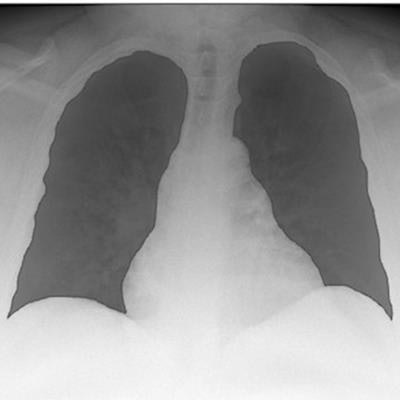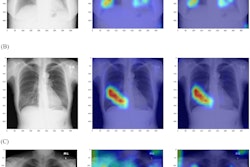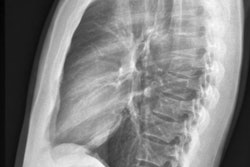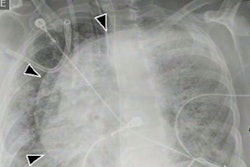
An artificial intelligence (AI) model based on radiomics features from portable chest x-rays could help predict COVID-19 patients' mortality risk, according to a study published November 5 in the Journal of Medical Radiation Sciences.
A group led by Yoshikazu Uchiyama, PhD, of Kumamoto University in Japan developed an AI model trained with portable x-ray COVID-19 radiomics features and found that it performed well for identifying death versus recovery cases. The results suggest that x-ray could offer prognostic data usually gleaned from CT.
"In previous radiomic studies of COVID-19, computed tomography (CT) images were used because of the ease of analysis, while chest radiographs have never been used," the group wrote.
The researchers culled portable chest x-ray images of 100 patients from the COVID-19 database of the Cancer Imaging Archive, a service by the U.S. National Institutes of Health; of these individuals, 10 died and 90 recovered. Their aim was to develop a model that distinguished between these cases.
Since it can be difficult to interpret portable chest x-ray images of patients with COVID-19 -- because bone components overlap with the abnormal patterns of the disease -- the group used a bone-suppression technique during preprocessing of the images, testing the model with and without it.
The team then included 620 radiomic features in the model based on measurements in the left and right lung regions on the x-rays, including a size feature, nine histogram features, 272 texture features, and 28 resolution features. The group analyzed the model's performance using area under the receiver operating characteristic curve (AUC).
 Examples of images with bone suppression and manually segmented lung regions. Courtesy of the Journal of Medical Radiation Sciences.
Examples of images with bone suppression and manually segmented lung regions. Courtesy of the Journal of Medical Radiation Sciences.For distinguishing between death and recovery cases, the highest AUCs the model achieved were 0.756 and 0.959, depending on the number of radiomics features included. But its discriminative performance improved when the investigators used the bone-suppression technique, with a sensitivity of 90.9% and a specificity of 95.6% for predicting mortality or survival.
An AI approach that uses portable chest x-ray rather than CT to predict the outcome of COVID-19 disease could reduce the risk of infection among hospital staff, as the images can be obtained in patients' rooms, they noted. But more research is needed.
"In the future, we will further explore the utility of using portable chest radiographs for this purpose by increasing the number of cases and improving the reliability of the system," the group concluded.



















